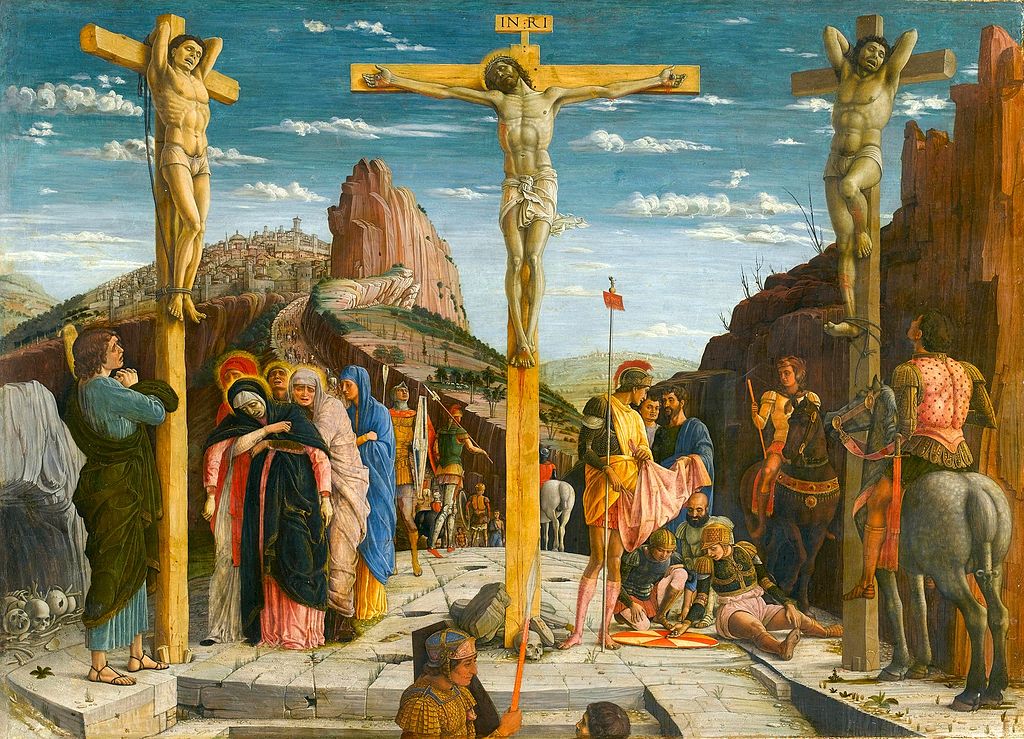Last updated on March 8th, 2023 at 06:09 am
The practice of crucifixion is one of the most infamous and brutal methods of execution in history. However, it’s unclear when and where the first crucifixion occurred.
Still, many believe that the practice was first used by the ancient Persians and later adopted by the Romans. “Crucifixion” comes from the Latin crux, meaning “cross.”
Crucifixion was a slow and painful way to go out. The victim would be tied or nailed to a wooden cross and left. As the person slowly suffocated, their body would often go into shock, and many would suffer cardiac arrest. Some victims, however, could suffer for days.
The practice of crucifixion was most commonly used as a form of punishment for slaves, criminals, and political prisoners. It was also used as a deterrent for others considering committing similar crimes.

Crucifixion and the Persian Empire
Some of the first recorded instances of crucifixion occurred in the Persian Empire. The Persians, who ruled over a large territory that included modern-day Iran, Iraq, and Afghanistan, are thought to have adopted the practice from the ancient Assyrians.
One of the most significant recorded instances of crucifixion occurred during the 6th century BC when the Persian Emperor Darius I ordered the crucifixion of 3,000 political prisoners in Babylon.
The practice of crucifixion continued under the Persian Empire’s successor, the Parthian Empire. During this time, crucifixion was often used to humiliate enemies and punish rebel leaders and military commanders who led uprisings against the ruling regime.
Crucifixion and The Roman Empire
While the Persians were the first to record instances of crucifixion, the practice was most commonly associated with the Roman Empire. The Romans are thought to have adopted the approach from the Carthaginians, a rival Mediterranean empire, during the Punic Wars.
The Roman historian Livy recorded that the Carthaginian general Hannibal crucified 500 Roman prisoners after defeating them in battle. This act is thought to have inspired the Romans to use crucifixion as punishment.
Crucifixion was first used extensively by the Roman military during the 1st century AD to punish rebellious soldiers and enemy combatants. The practice then became more widespread under the rule of Emperor Augustus Caesar, who used it to punish criminals and political dissenters.
During the reign of Emperor Tiberius, crucifixion was reserved for the lowest class of criminals, such as slaves and bandits. But under Emperor Nero, who ruled from 54-68 AD, crucifixion was used more frequently to punish Christians, who were seen as a threat to the Roman Empire.
The practice of crucifixion eventually fell out of favor and was abolished by Emperor Constantine in the 4th century AD. It has since been outlawed by most countries.
Crucifixion and The Carthaginian Empire
The Carthaginian Empire was another major power in the Mediterranean region during the Punic Wars. The Carthaginians, like the Persians, are thought to have adopted the practice of crucifixion from the Assyrians.
While the Carthaginians were not as prolific in their use of crucifixion as the Persians or Romans, there are a few notable instances that have been recorded.
One of the most famous instances occurred during the 3rd century BC when the Carthaginian ruler Hamilcar Barca crucified 500 Roman prisoners to deter other Roman generals from attacking Carthaginian cities. Many feel that this act of crucifixion inspired the Romans to start using the practice as well.
The practice of crucifixion eventually fell out of favor with the Carthaginians and was abolished by the end of the Punic Wars. It has since been outlawed.
The Crucifixion of Jesus Christ
The most famous instance of crucifixion is the crucifixion of Jesus Christ. The story of Christ’s crucifixion is told in the New Testament of the Bible.
According to the Bible, Jesus was arrested and tried for heresy by the Roman authorities. He was then sentenced to be crucified on a cross.
Christians believe that Jesus was crucified as a sacrifice for the sins of humanity. His crucifixion and resurrection are said to have brought about the redemption of mankind.
The crucifixion of Jesus Christ is commemorated by Christians every year during Easter.
Crucifixion in Recent History
Although most countries have outlawed crucifixion, there have been some documented cases in recent history.
In 1997, for example, three men in Sudan were crucified for looting during a time of war. And in 2005, an Iraqi man was reportedly crucified by militants from al-Qaeda.
There have also been several cases of crucifixion being carried out in Saudi Arabia. The country has a strict Islamic legal code that will execute you for a number of crimes.
Although the practice of crucifixion seems a bit outdated and barbaric, it’s still being carried out in some parts of the world. Thankfully, though, the number of cases is very small, and the practice is continuing to fade away.

